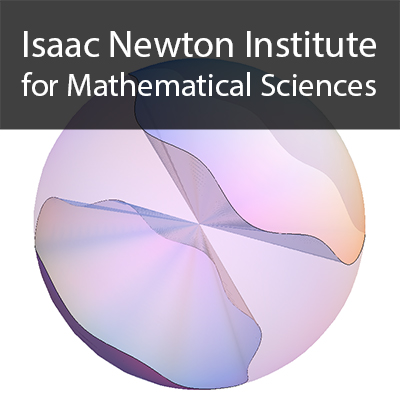Plenary Lecture 3: Free Boundaries and Fluid Mixing at the Micro Level
43 mins 13 secs,
629.72 MB,
MPEG-4 Video
640x360,
29.97 fps,
44100 Hz,
1.94 Mbits/sec
Share this media item:
Embed this media item:
Embed this media item:
About this item

| Description: |
Glimm, J (Stony Brook University)
Monday 23 June 2014, 13:30-14:15 |
|---|
| Created: | 2014-07-02 13:48 |
|---|---|
| Collection: | Free Boundary Problems and Related Topics |
| Publisher: | Isaac Newton Institute |
| Copyright: | Glimm, J |
| Language: | eng (English) |
| Distribution: |
World
|
| Explicit content: | No |
| Aspect Ratio: | 16:9 |
| Screencast: | No |
| Bumper: | UCS Default |
| Trailer: | UCS Default |
| Abstract: | Turbulent mixing often occurs with immiscible fluids or with miscible fluids over rapid time scales, so that the flow is locally inhomogeneous at a micro level for periods of interest. We start with a review of problems in which such flows arise.
The flow regions in which the mixing occurs can generally be identified reliably; examples will be given. The challenge for current research is to describe the microscopic and inhomogeneous mixture in a statistical sense. Full resolution of the flows is generally out of the question and will remain so for decades. Thus we are interested in statistical properties of the flow that are stable and appear to converge under mesh refinement, with sufficient detail in the statistical description (for example a pdf or cdf (cumulative distribution function) to support reaction processes in flows of engineering interest. A first step, generally insufficient, is to compute means and variances of fluctuating processes. This goal is still in the future. Partial results leading in this direction will be presented. We formulate a notion of stochastic convergence and present numerical algorithms which appear to be convergent in this metric. We introduce theoretical ideas related to convergence based on the renormalization group, including the important notion that the solution, at the LES level of resolution of necessity considered here, is not unique. In other words, the usual standard of convergence under mesh refinement is not sufficient to guarantee a simulation in agreement with experimental data. We discuss methods to mitigate this serious obstacle to scientific progress. Basically, experiments are essential to select the correct non-unique solution and the algorithm and its adjustable parameters to reach this goal. While flows of interest are commonly at high Reynolds numbers outside the regime of relevant experiments, the expansion parameter is 1/Reynolds number. In terms of this parameter, the perturbation from experiment to applications is small, within normally accepted ranges for perturbative extensions of validation regimes. "cambridge.14.abs" 37L, 2201C |
|---|---|
Available Formats
| Format | Quality | Bitrate | Size | |||
|---|---|---|---|---|---|---|
| MPEG-4 Video * | 640x360 | 1.94 Mbits/sec | 629.72 MB | View | Download | |
| WebM | 640x360 | 784.16 kbits/sec | 248.31 MB | View | Download | |
| iPod Video | 480x270 | 522.19 kbits/sec | 165.29 MB | View | Download | |
| MP3 | 44100 Hz | 249.77 kbits/sec | 79.15 MB | Listen | Download | |
| Auto | (Allows browser to choose a format it supports) | |||||

